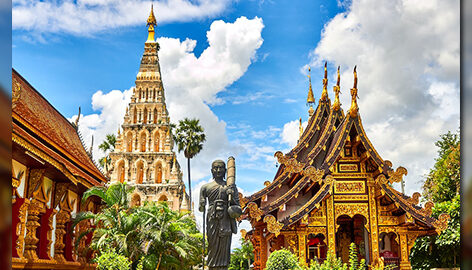
Education plays a vital role in our lives; it makes us realize our full potential and helps build character, opinion and intellect. With proper education, an individual achieves success and changes his perspective and opinion toward life. It helps achieve the aims of transmitting knowledge and fostering skills and character traits. Today we will discuss commemorative stamps issued to promote Education. by Indian Government.
Continue reading Commemorative Stamps Issued to Promote Education

Baht is a Monetary unit in the currency of Thailand. The baht is the official currency of Thailand baht is divided into 100 satang. The Thai currency code is THB. The issuance of Baht from the bank of Thailand. According to the statistics, SWIFT ranked the Thai Baht as the tenth most-used world payment currency in January 2019. The circulated banknotes today in Thailand are in the range of 20 baht, 50 baht, 100 baht, and 1000 baht. Baht issuance of 10 to 10,000 Baht. Continue reading Currency Of Thailand-Thai Baht

India began its trade relationship with the Portuguese in 1948 with the arrival of Vasco Da Gama. The Portuguese were among the most influential European powers to land on the Indian coast in 1498 and remained the dominant power for nearly two centuries until; the arrival of the British East India Company. The entrance of the British East India Company squashed the strength and supremacy of the Portuguese, and the Portuguese control was limited to Goa, Daman-Dui and Dadra-Nagar Haveli. The Portuguese issued their first Portuguese India banknotes in 1882. Continue reading Portuguese India Banknotes Depicting Temples

Many scholars and historians mark 600 BCE as the end of the ancient era and the start of the medieval period. This era also witnesses the rise of feudalism in India, which paves the way for the self-sufficient villages, and national and international trade. It was also the period when many strong and famous dynasties rose to power, one of them being the Rashtrakuta empire. The origin of Rashtrakuta is traced to 600 CE, they established their stronghold in Deccan in the later period and simultaneously extended their power till Kannauj, making them part of the famous tripartite struggle. This dynasty is the most studied and explored by historians for its warfare, expansion, administration and trade. Continue reading Rashtrakuta Coinage

Malwa Sultanate was an Independent kingdom established by Dilawar Khan in 1392 CE during the late medieval period in India. Rulers of this sultanate were of Afghan origin and ruled parts of present Madhya Pradesh and south-eastern Rajasthan between 1392 CE and 1562 CE. Today we will discuss the history of Malwa Sultanate and Malwa Sultanate Coinage. Continue reading Malwa Sultanate Coinage

Here’s good news for all those passionate coin collectors out there. With an ever-expanding online database about old historic coins from around the world, we are listing rare premium coins which every collector should possess. Continue reading Old Historic Coins Series that Every Numismatist should possess!

Gajalaxmi is a Laxmi with an elephant; it is one of the most significant Ashtalakshmi aspects of the Hindu goddess Lakshmi. Gajalaxmi can de define as the goddess seated on the lotus in padmasana yogic posture, flanked by two elephants (Gaja) on both sides. The elephants flanking her are shown as pouring water from their trunk over the goddess. In Hindu mythology, Laxmi is a representative of prosperity, good luck and abundance. Lakshmi is the Goddess of wealth, fortune, power, and beauty. She represents all that is female. That’s why many ancient goddess Lakshmi coins are issued by many rulers; it’s also the most common image in the numismatic continuity of Indian coinage. Continue reading Ancient Goddess Lakshmi Coins

Punch marked coins are the earliest coin issued in India. These coins were issued between the 6th century BC and 2nd Century BC. The study of this coin is a very fascinating and mysterious part of Indian coinage. The Punch Marked Coins were issued during the Janapada and Mahajanapa during the ancient period. Continue reading Symbols seen on ancient Punch Marked Coins

The Sikh Empire was one of the major powers empires that originated in the Indian Subcontinent during the medieval period. This Empire is also known as Sikh Khalsa Raj or Sarkar-i-Khalsa. It was formed under the leadership of Maharaja Ranjit Singh, who established this kingdom under a secular empire based in Punjab.The Sikh Empire Coins started during the second half of the 18th century. Probably during the rule of Maharaja Ranjit Singh and it ended with the annexation of Punjab by the British government in 1849 CE. Continue reading Sikh Empire Coins

The scope or range of history has been ever-changing and ever-widening. There was a time when history was a collection and transmission of fables, folktales, legends, and mythologies. It was based on imagination, memory, and tradition. Continue reading Historical Postage Stamps for Understanding Scope of Archaeology